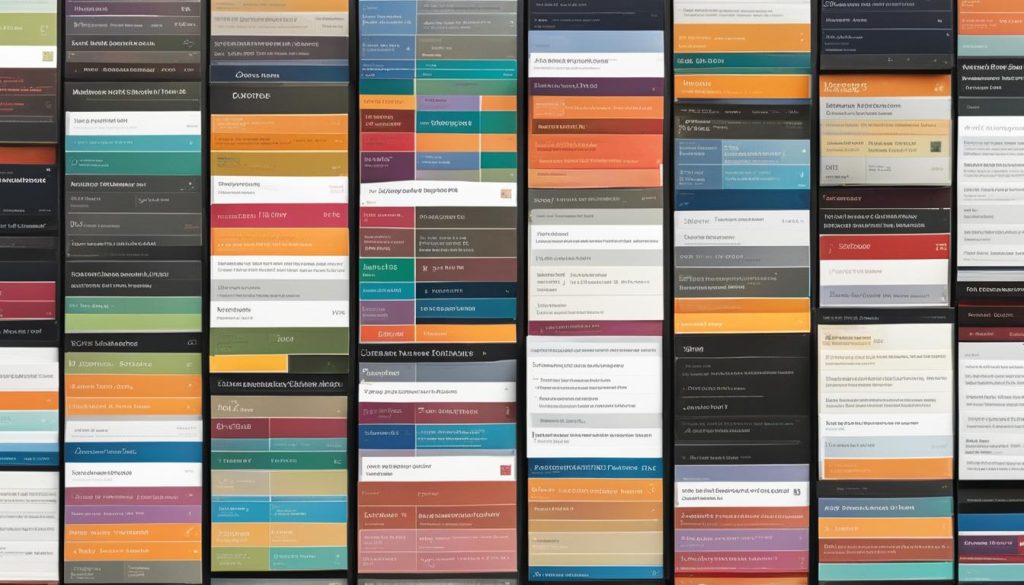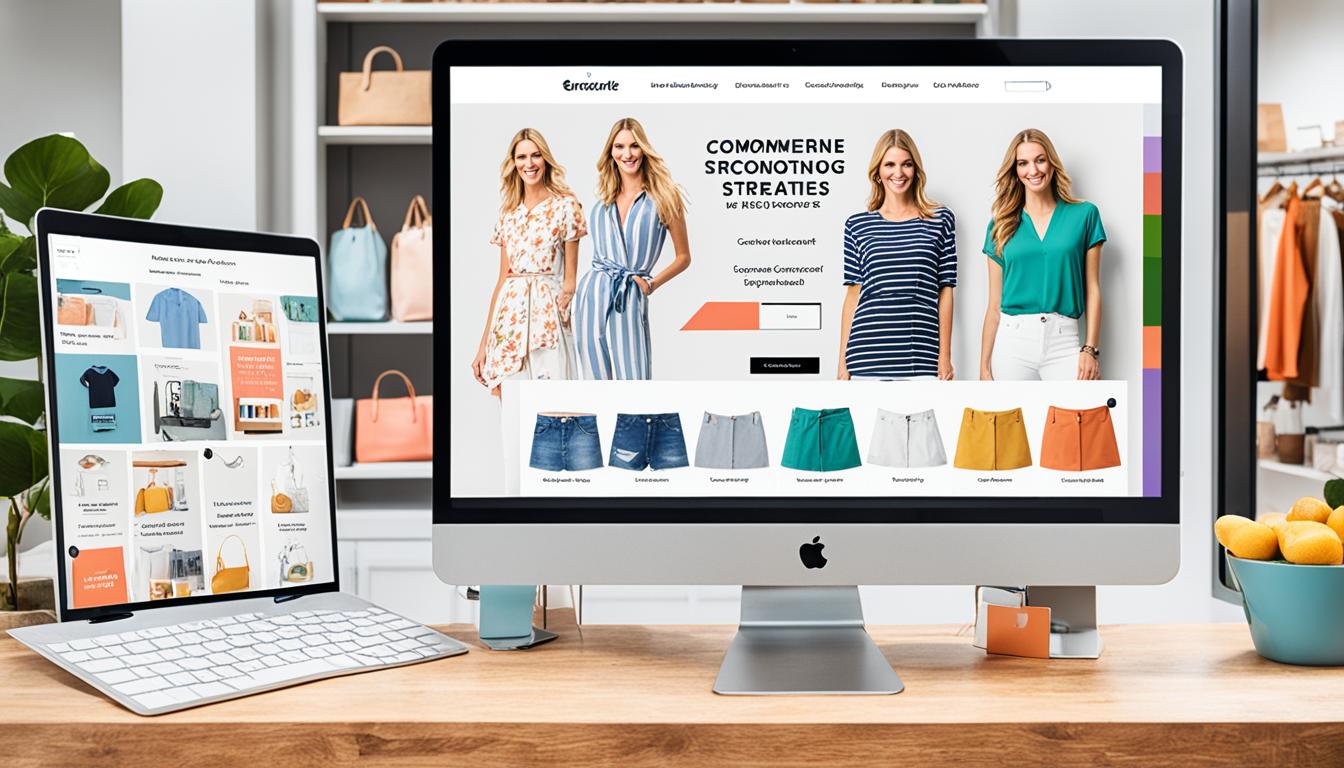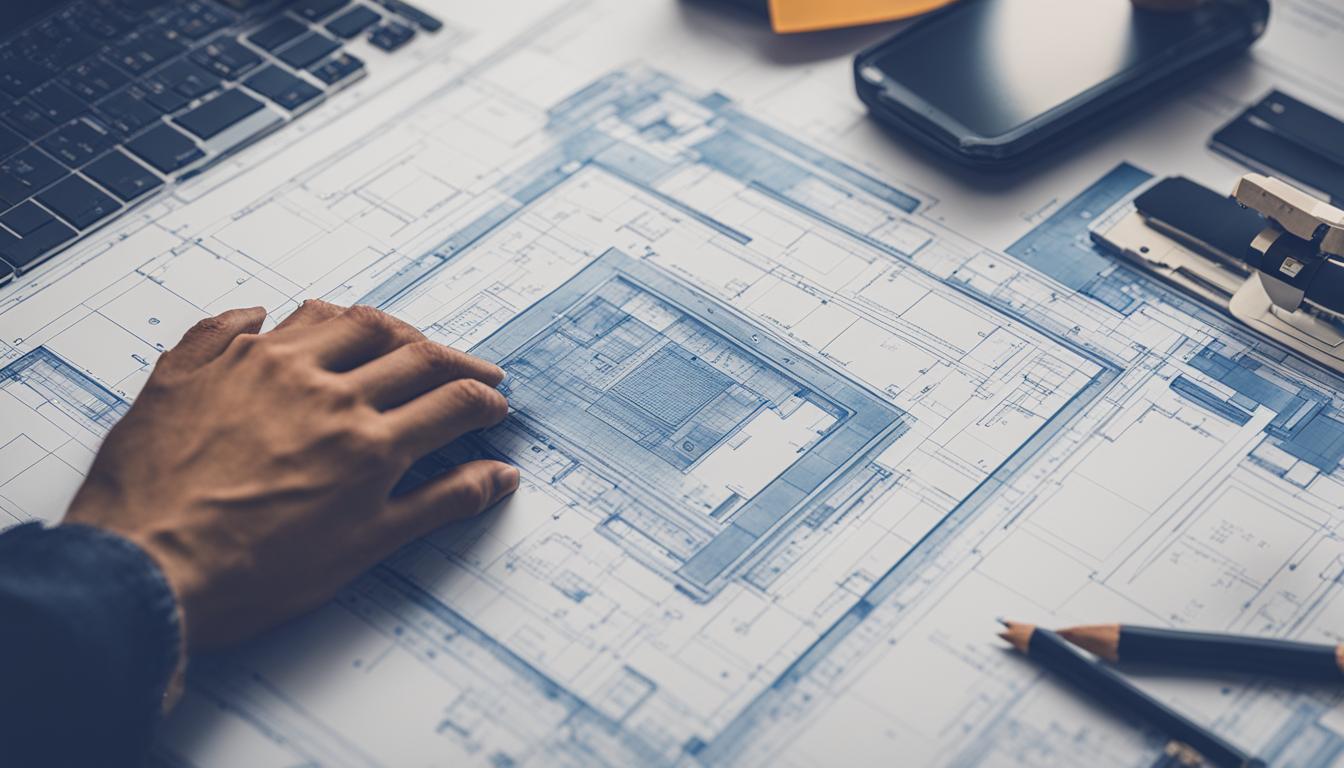Web Design: 11 Characteristics of a User-Friendly Website
Did you know that a staggering 94% of website visitors’ first impressions are design-related? That’s right, a user-friendly website design is crucial for making a positive impact on your audience and driving business success in today’s digital landscape.
Web design goes beyond aesthetics. Neglecting usability can result in missed opportunities for businesses, while good usability enhances website performance, increases the chances of success, and boosts sales and revenue. So, what makes a website user-friendly? In this article, I’ll explore 11 essential characteristics of a user-friendly website. From mobile compatibility to effective navigation, these characteristics will improve customer appeal, enhance usability, and contribute to your online success.
Key Takeaways:
- A user-friendly website is crucial for making a positive first impression and driving business success.
- Good usability enhances website performance, increases the chances of success, and boosts sales and revenue.
- Mobile compatibility, effective navigation, and well-formatted content are among the essential characteristics of a user-friendly website.
- Implementing these characteristics will improve customer appeal, enhance usability, and contribute to your online success.
- Stay tuned as we explore each characteristic in detail and provide actionable tips for achieving a user-friendly website.
Mobile Compatibility
With the increasing use of mobile phones to access the internet, having a mobile-compatible website is essential. Users expect websites to be optimized for mobile devices, providing a seamless browsing experience. To ensure mobile compatibility, it is crucial to test how your website appears on different mobile devices. The Google mobile site tester is a valuable tool for evaluating the mobile-friendliness of your website.
If your website is not mobile-friendly, it’s time to invest in responsive design. A responsive design ensures that your website adapts to different screen sizes, making it accessible and easy to navigate on mobile devices. You can also consider creating a separate mobile version of your website using web-based mobile website builders. These builders provide intuitive drag-and-drop interfaces and templates that simplify the process of creating a mobile optimized website.
Benefits of Mobile Compatibility
Mobile compatibility offers several benefits, including:
- Improved user experience on mobile devices
- Higher mobile search rankings on Google
- Increased mobile traffic and conversions
- Better customer engagement and satisfaction
By prioritizing mobile compatibility and responsive design, you can cater to the needs of your mobile users and enhance your overall online presence.
Accessibility to All Users
A user-friendly website is not only about a visually appealing design and easy navigation; it should also be accessible to all users, regardless of their abilities or disabilities. Web accessibility plays a crucial role in ensuring inclusivity and providing equal access to information and services for everyone.
One important aspect of web accessibility is making your website compatible with screen-readers. Screen-readers are assistive technologies that read out the content of a webpage to visually impaired or blind users. By implementing web design techniques outlined in the 508 website accessibility guidelines, you can ensure that your website can be easily accessed and navigated by screen-reader users.
Here are a few key considerations for improving accessibility:
- Provide alternative text for images: Screen-readers cannot interpret images, so it is essential to include descriptive alt attributes for images. This allows visually impaired users to understand the context of the image.
- Use proper heading structure: Headings help organize content and make it easier to navigate. Use heading tags (h1, h2, h3, etc.) in a logical hierarchy to indicate the structure of your webpage.
- Ensure keyboard accessibility: Some users may not be able to use a mouse or touchpad. Ensure all interactive elements, such as buttons and links, can be accessed and activated using only the keyboard.
- Contrast and color considerations: Use color combinations that provide sufficient contrast between the text and background. This helps users with low vision or color blindness to read the content without difficulty.
- Provide transcripts for audio and video content: Transcripts allow users who cannot hear the audio or view the video to access the information conveyed in the media.
These are just a few examples of web accessibility best practices. By adhering to the 508 website accessibility guidelines, you can ensure that your website is user-friendly and inclusive to a larger audience.
Implementing accessibility features not only benefits users with disabilities but also improves the overall user experience. It showcases your commitment to inclusivity and helps you reach a wider audience.
To learn more about web accessibility and how you can make your website more inclusive, visit the World Wide Web Consortium’s (W3C) Web Accessibility Initiative (WAI).

Well Planned Information Architecture
When it comes to creating a user-friendly website, information architecture plays a crucial role. The way information is organized and presented on your website can significantly impact its usability and user experience.
To ensure an intuitive browsing experience for your visitors, it is essential to carefully plan and structure your website’s sections and categories. By organizing your content in a logical and user-friendly manner, you can make it easier for users to find the information they are looking for.
Consider the user perspective when designing your website’s information architecture. Take into account how your users would naturally think and categorize the content. This will help you create a website that aligns with their expectations and makes navigation effortless.
When organizing your content, utilize content categorization techniques to group related information together. This allows users to navigate through your website more efficiently and find the content that is most relevant to them.
Take advantage of menus, submenus, and search functionality to further enhance the user experience. Clear and intuitive navigation menus can help users easily navigate from one section to another, while a robust search feature enables users to find specific content quickly.
By investing time in planning and refining your website’s information architecture, you can create a user-friendly website that provides an optimal browsing experience and keeps visitors engaged.
Figure 4: Visual Representation of a Well-Planned Information Architecture
As seen in Figure 4, a well-planned information architecture ensures that content is organized in a clear and logical manner, creating a seamless user experience.
Well-Formatted Content That Is Easy to Scan
When it comes to website content, users tend to scan through the information rather than reading every word. As a web designer or developer, it’s crucial to ensure that your content is well-formatted and easy to scan, enhancing readability and improving the overall user experience.
One effective technique for organizing content is to use headings and subheadings. These help users quickly identify the main points and navigate through the information. Consider using HTML tags such as
,
, and
to structure your headings, depending on the hierarchy and importance of the content.
to structure your headings, depending on the hierarchy and importance of the content.
Additionally, break down longer paragraphs into shorter ones to make the content more digestible. Use bullet points and numbered lists to present information concisely and clearly. This not only makes it easier for users to scan through the content but also improves the visual appeal of your website.
Here’s an example of well-formatted content:
Benefits of Well-Formatted Content:
- Enhances readability for users
- Improves comprehension and understanding of the information
- Increases user engagement and time spent on the website
- Facilitates easy navigation and information retrieval
- Boosts search engine optimization by providing structured content for search engine crawlers
By implementing these formatting techniques, you can create content that is not only visually appealing but also optimized for scannability and readability. Remember, a well-structured website with easily scannable content can significantly improve the overall user experience and keep visitors engaged.

| Formatting Element | Usage |
|---|---|
| Headings and Subheadings | Use HTML tags like
,
to create hierarchical headings and subheadings. This helps users quickly identify key points and navigate through the content. |
| Shorter Paragraphs | Break down longer paragraphs into shorter ones to improve readability and make the content more digestible for users. |
| Bullet Points and Numbered Lists | Use bullet points and numbered lists to present information concisely and clearly, making it easier for users to scan through the content. |
Fast Load Times
Fast load times are essential for a seamless website browsing experience. Visitors are impatient, and if your website takes too long to load, they may become frustrated and leave. Moreover, slow load times can negatively impact your search engine ranking. To ensure optimal usability and performance, aim for a website that loads within 4 to 6 seconds.
One effective way to measure and improve website speed is by using tools like Pingdom. Pingdom provides insights into your website’s load times and identifies areas for improvement. By analyzing the results, you can optimize your website’s performance and enhance user satisfaction.
Additionally, it’s important to limit the use of third-party website plugins and widgets. While these plugins and widgets can enhance your website’s functionality, excessive use can significantly slow down load times. Evaluate the necessity of each plugin and widget and remove any that are not essential to minimize the impact on load times.
Avoid compromising speed for unnecessary features and consider alternative ways to meet your website’s requirements efficiently.
Browser Consistency
Ensuring browser compatibility is essential for maintaining a consistent website appearance across all major browsers like Chrome, Internet Explorer, Firefox, Safari, and Opera. With a consistent design, your website will deliver a cohesive brand image and improve user experience.
Browser compatibility refers to the ability of your website to display correctly and function smoothly on different browsers and devices. Since not all browsers interpret HTML and CSS in the same way, it’s crucial to test your website on multiple browsers to identify and address any potential issues.
By optimizing your website for compatibility, you can avoid discrepancies in how your website appears and behaves on different platforms. Consistency in design and functionality enhances user trust, encourages longer engagement, and reduces the chances of visitors abandoning your site due to a poor browsing experience.
Achieving browser compatibility involves careful testing and adjustment of your website’s code. Pay attention to the rendering of layouts, images, fonts, and interactive elements. Test different screen sizes and resolutions to ensure your website is responsive and adapts well to various devices.
When optimizing for browser compatibility, consider the following best practices:
- Use standard-compliant HTML and CSS coding techniques.
- Avoid browser-specific features and proprietary technologies.
- Regularly update and maintain your website’s codebase.
- Test your website on different browsers and versions regularly.
- Implement fallbacks and graceful degradation for older browsers.
By prioritizing browser compatibility, you can provide a consistent and user-friendly experience across major browsers, enhancing your website’s effectiveness and driving better engagement with your audience.
Effective Navigation
When it comes to creating a user-friendly website, effective navigation is key. Navigation allows users to find what they’re looking for quickly and easily, enhancing their overall experience. To achieve this, consider implementing simple HTML or JavaScript menus, as they tend to work best and appear consistent across different browsers and platforms. These menus provide a clear and intuitive way for users to navigate your site.
For larger websites with numerous sections and pages, it’s important to utilize drop-down menus or sub-navigation. This allows for a more organized and structured navigation experience, enabling users to explore different sections of your site effortlessly. By incorporating these features, you can ensure that users can easily access the content they need without feeling overwhelmed.
In addition to menus, it’s crucial to incorporate good search functionality on your website. A search bar that is prominently placed and easy to use allows users to find specific information quickly, improving their navigation experience. Furthermore, providing multiple ways to explore content, such as related articles or recommended products, can also enhance navigation and encourage users to explore more of your website.
Don’t overlook the importance of informative headers and footers as well. These sections can offer additional navigation options and provide context for the content on a given page. By including relevant links and summaries of important information, headers and footers contribute to the overall user-friendly experience of your website.
FAQ
What is the importance of having a mobile-compatible website?
How can I check if my website is accessible on mobile?
What should I do if my website is not accessible on mobile?
Why is accessibility to all users important for a user-friendly website?
How can I make my website accessible to screen-readers?
How should I plan the information architecture of my website?
How can I format content to make it easy to read?
Why is fast load time important for a user-friendly website?
How can I improve the load time of my website?
Why is browser consistency important for a user-friendly website?
How can I achieve browser consistency?
- How Strategic SEO Drove Growth for a CPAP E-commerce Brand - July 24, 2025
- Top 3 SEO Companies in Toronto: An Analytical Comparison - July 23, 2025
- SEO for Entry Door Services - April 24, 2025





















Post Comment
You must be logged in to post a comment.